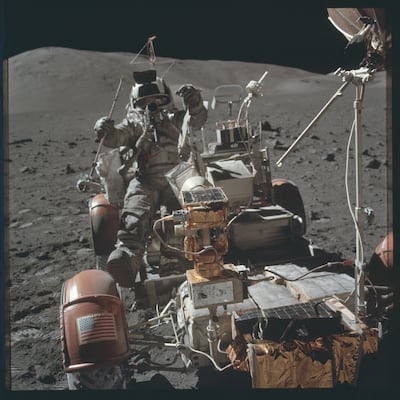A US company hopes to attempt the first American Moon landing in 50 years when it launches its Peregrine spacecraft in December.
Astrobotic was contracted by US space agency Nasa to deliver a payload to a region called Ocean of Storms – the largest dark spot on the Moon.
A successful touchdown would mean the first landing since the Apollo 17 mission in 1972.
Last week, the craft arrived at the launch site in Florida for integration with the Vulcan rocket. Lift-off is set for December 24, with a landing expected in early 2024.
“As we know, space is a difficult environment. We’re ready for launch after successfully completing a battery of industry-standard acceptance testing so Peregrine has the best chance for mission success,” said Sharad Bhaskaran, the mission director.
“Peregrine and the team are ready. After launch, we will separate from the Vulcan Centaur and establish power and communications with the spacecraft to guide it to the Moon.”
This could also become the first private mission to touchdown on the Moon, after failed attempts by Israeli and Japanese companies.
The Indian space agency was the most recent to successfully carry out a soft lunar landing – a feat previously only achieved by Nasa, the Soviet Union and China.
What will Peregrine study?
The company will use Nasa technology to send back data on the geological outlook of the lunar surface.
Nasa's Lunar-VISE, a scientific camera, will study outside of the Gruithuisen Domes, an area that is believed to have been formed by a magma rich in silica, similar to the composition of granite.
“On Earth, formations like these need significant water content and plate tectonics to form, but without these key ingredients on the Moon, lunar scientists have been left to wonder how these domes formed and evolved,” said Nasa.
Other science goals of the lander include studying the Moon's radiation environment and lunar soil, including how much hydrogen it contains.

Companies racing to land on the Moon
Astrobotic is the third company to attempt a landing on the lunar surface.
Israel's SpaceIL and Israel Aerospace Industries attempted a soft touchdown in 2019 but crash-landed reportedly because of an engine failure.
Japan's ispace was hoping its Hakuto-R Mission 1 lander, which was carrying the UAE's Rashid rover, would soft land in April of this year, but it also crash-landed.
Its software had a glitch, which caused the craft to miscalculate its altitude moments before a landing was expected.
India's space agency Isro had a failed landing in 2019, but its Vikram lander carried out a successful touchdown earlier this year.
Russia's Luna-25 craft, its first mission in 50 years, failed to land in August of this year.
Japan's space agency Jaxa launched its Moon Sniper mission in September, with a landing attempt expected to take place next year.
Lunar landings are difficult as the Moon does not have an atmosphere, so a spacecraft cannot use parachutes to slow down like on Earth and Mars.
It needs to have a propulsion system to propel itself towards the Moon and then use its thrusters to attempt a landing – all while avoiding the unstable terrain of the lunar surface.


